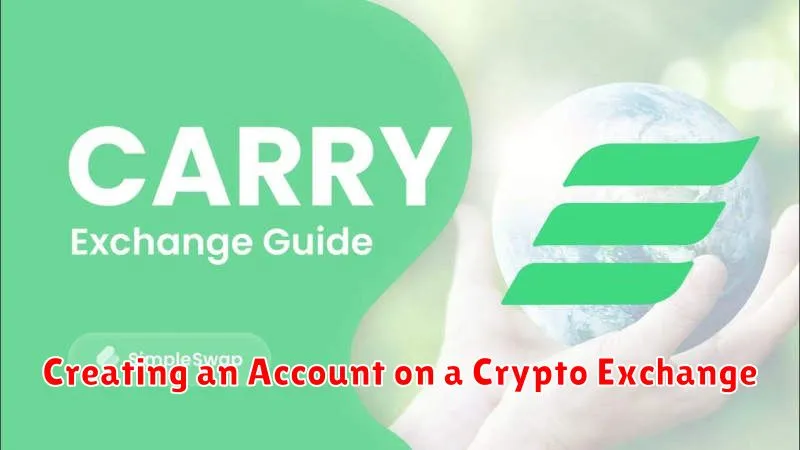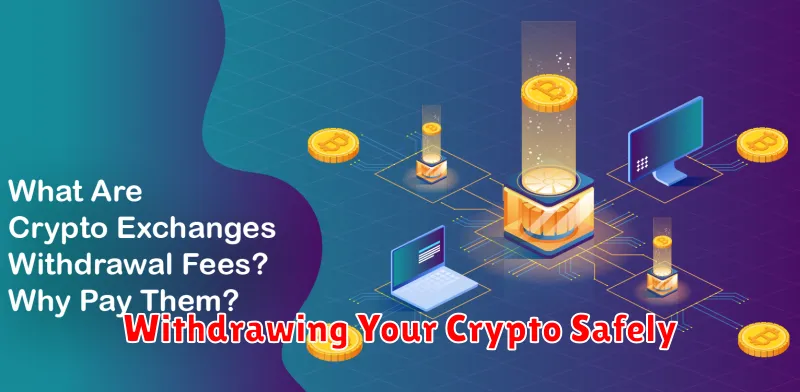Navigating the world of cryptocurrency can feel daunting, but understanding how to use a crypto exchange is the first step towards accessing this exciting and potentially lucrative market. This comprehensive guide, “How to Use a Crypto Exchange for the First Time,” will walk you through the entire process, from selecting a reputable exchange platform and verifying your identity to making your first cryptocurrency trade. Learn how to securely buy, sell, and manage your digital assets, covering everything from understanding trading fees to implementing robust security measures. Master the fundamentals and confidently begin your journey in the dynamic world of crypto investing.
Creating an Account on a Crypto Exchange

The first step to using a crypto exchange is creating an account. This process typically involves providing personal information such as your name, email address, and date of birth. You will also need to choose a strong password to secure your account.
Many exchanges require Know Your Customer (KYC) verification. This means you’ll need to provide identification documents, such as a driver’s license or passport, to comply with anti-money laundering regulations. This verification process is essential for securing your account and facilitating transactions.
Once you’ve submitted your information and completed the KYC process (if required), the exchange will review your application. Upon approval, you’ll be able to log in and start using the platform. Remember to keep your login details safe and secure to prevent unauthorized access.
After account creation, it’s crucial to enable two-factor authentication (2FA) for an added layer of security. This typically involves using an authenticator app on your phone to generate a unique code alongside your password, making it significantly harder for unauthorized individuals to access your account.
Verifying Your Identity (KYC Process)

Before you can start trading on a crypto exchange, you’ll need to complete a Know Your Customer (KYC) process. This is a crucial security measure implemented to comply with regulations and prevent illicit activities. KYC involves verifying your identity to ensure you are who you say you are.
The specific requirements vary by exchange, but generally, you will need to provide identification documents such as a government-issued ID (passport, driver’s license), and possibly a proof of address (utility bill, bank statement). You might also need to take a selfie to confirm your likeness.
Accuracy is paramount. Ensure all information provided is correct and matches your identification documents precisely. Inaccurate information can lead to delays or rejection of your application. The process usually takes a few minutes to a few days depending on the exchange and the speed of verification.
Once your identity is verified, you gain full access to the exchange’s features, including trading, depositing, and withdrawing cryptocurrency.
Depositing Funds and Choosing a Trading Pair

Before you can begin trading, you must first deposit funds into your exchange account. Most exchanges support various deposit methods, including bank transfers, credit/debit cards, and other cryptocurrencies. Carefully review the available options and associated fees, selecting the method most convenient and cost-effective for you. After selecting your method, follow the exchange’s instructions to complete the deposit. Note that deposits can take some time to process, depending on the chosen method.
Once your funds are available, you can start selecting a trading pair. A trading pair represents two cryptocurrencies that can be exchanged against each other (e.g., BTC/USD, ETH/BTC). Choose a pair based on your trading strategy and risk tolerance. Begin by researching the assets in the pair to understand their market behavior and potential for profit or loss. Carefully consider the current market conditions and your own financial goals before making any trades.
Placing Your First Trade: Market vs. Limit Orders

Before executing your first cryptocurrency trade, understanding the difference between market and limit orders is crucial. These order types dictate how your trade is executed.
A market order buys or sells at the best available price immediately. This ensures your trade is executed quickly but may result in a less favorable price, especially during volatile market conditions. The speed is its primary advantage.
Conversely, a limit order allows you to specify the exact price at which you’re willing to buy or sell. If the market price reaches your limit, your order will be executed. If not, your order remains open until it’s filled or canceled. This offers better price control but comes with the risk of your order not being filled if the market doesn’t reach your specified price.
Choosing between a market and limit order depends on your priorities. For urgent trades, a market order is preferable. If you prioritize price certainty, a limit order provides more control, allowing you to potentially buy low and sell high.
Withdrawing Your Crypto Safely

Withdrawing your cryptocurrency from an exchange requires careful attention to security. Begin by verifying your withdrawal address multiple times. A single typo can result in irreversible loss of funds. Double-check the address against the intended recipient’s public key or QR code.
Enable two-factor authentication (2FA) on your exchange account. This adds an extra layer of security, making it significantly harder for unauthorized individuals to access your funds, even if they obtain your password. Consider using a hardware security key for the strongest 2FA protection.
Withdraw smaller amounts initially to test the process and ensure the funds arrive correctly. This minimizes potential losses in case of errors. Only withdraw larger sums after confirming successful smaller withdrawals.
Be wary of phishing scams. Legitimate exchanges will never ask for your private keys or seed phrases. Do not click on links from unknown sources or reply to suspicious emails.
Choose reputable exchanges with a proven track record of security. Research the exchange’s security measures and read user reviews before depositing or withdrawing any significant amount of cryptocurrency.
Regularly review your account activity to detect any unauthorized transactions. Set up email or app notifications to receive alerts for all withdrawals and account changes.

